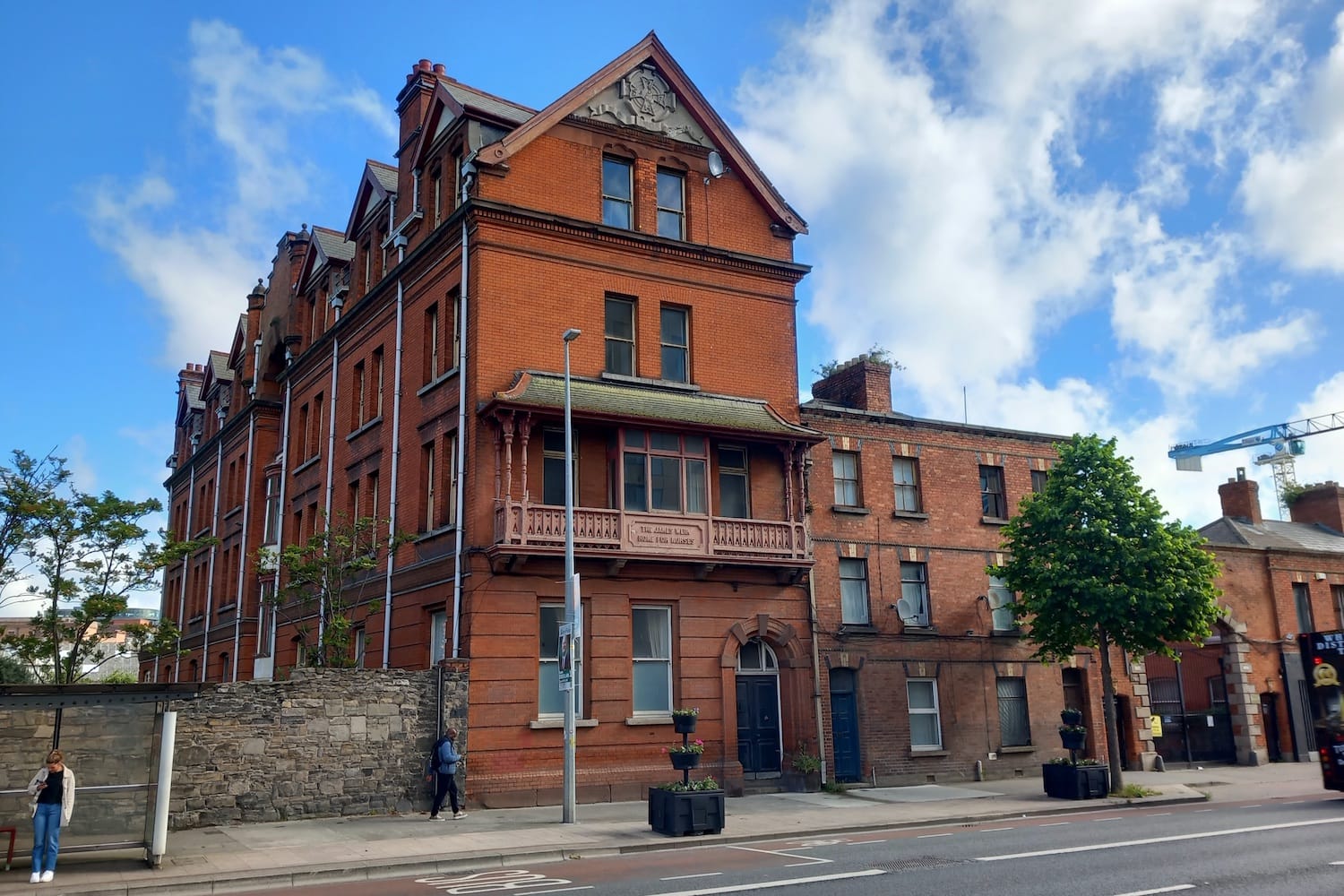What’s the best way to tell area residents about plans for a new asylum shelter nearby?
The government should tell communities directly about plans for new asylum shelters, some activists and politicians say.
The burial ground on Cork Street near Marrowbone Lane dates back to the 17th century and hundreds of people are buried under its grassy surface.

For years, there’s been a plan to turn the old James Weir Home for Nurses building on Cork Street into social housing, and fix up and better preserve the adjoining Quaker burial ground.
When Labour Councillor Darragh Moriarty asked for an update on that tangled and long-delayed multi-agency effort, the council issued a written reply in March of this year.
It said, among other things, that, “Temporary use of a portion of the Burial Grounds is likely needed for construction to proceed subject to acquisition/agreement/license to build.”
The burial ground looks like a grassy green lawn, but underneath hundreds – or even thousands – of people are buried. This part of the city was the heart of the Quaker community in the 17th century, according to Rob Goodbody, a Quaker historian.
There are not many more than a dozen visible headstones, most lying horizontal on the grass, with dates in the mid-19th century. Up till then, the Quaker community didn’t allow its members to put markers on their graves, Goodbody said.
Asked about the council’s statement, Susanna Murdoch, a member of Dublin Monthly Meeting of the Religious Society of Friends in Ireland, said that “Any activity at the Burial Ground will have to be managed respectfully recognising its special status and those interred there.”
The HSE manages the red-brick Weir Home building, on Cork Street between Marrowbone Lane and Urban Plant Life.
Dating back to 1900, it was once a place to live for nurses working in Cork Street Fever Hospital across the road, the complex now known as Brú Chaoimhín, which is still used by the HSE.
In October 2022, the plan was for the HSE to transfer the building and adjoining burial ground to the Peter McVerry Trust.
The Religious Society of Friends (the Quakers) hold title to the burial ground, but it is under the control of the HSE at the moment, the council says.
Peter McVerry trust would then redevelop the Weir House as social housing and transfer the burial ground to Dublin City Council, the plan went.
Earlier this year, Moriarty, the Labour councillor, asked council managers for “an update on plans for the Quaker Burial Ground on Cork Street to transfer to Dublin City Council for a publicly accessible greenspace”.

Peter McVerry Trust – which is being investigated by regulators over a financial scandal that is still unfolding – had withdrawn from the Weir Home project, the response said. The search was on for another housing charity to take over, it said.
“The Parks Service will take the burial grounds in charge if and when the title is transferred to Dublin City Council,” said the response.
Murdoch, of the Quakers, said the burial grounds were “A unique oasis which we hope will become a green community facility supporting biodiversity.”
So what did the statement in the council’s response to Moriarty about part of the burial ground being needed for construction of the social housing at Weir House mean?
“Temporary use of a portion of the Burial Grounds is likely needed for construction to proceed,” the response had said.
Would part of the burial ground be used to store construction materials? To park construction vehicles? To drive through to access Weir House?
“We’re not aware of any plans to use the Quaker Burial Grounds for construction,” a council spokesperson said by email on 9 May.
“Any use of this site will need to be discussed and agreed with the City Archaeologist/ National Monument Service and meet the objectives of Dublin City Council Burial Places Strategy,” she said.
Why did the council’s Culture, Recreation and Economic Services department tell Moriarty that use of part of the grounds was likely needed for construction to proceed, and the press office was providing a response that seemed to contradict that?
“We haven’t seen proposals for the development of Weir House which interfaces with the Quaker Burial so we can’t comment on it,” the spokesperson said.
“There is an existing entrance to Weir House from the street via a tarmac driveway which we understand traverses the Quaker Burial Ground so use of this land for development of Weir House would be subject to agreement with conditions for protection of the Burial Grounds during the works,” they said.
Tony O’Riordan, CEO of Sophia Housing, said that his housing charity “would be interested in acquiring James Weir Home but there are no formal negotiations at this stage”.
But Sophia Housing “has also a track record of working with heritage buildings and would be acutely aware of the historical significance of the buildings and burial grounds”.
“The role that front line care workers have played in Ireland is also remarkable and Sophia is aware that the building was used by Nurses/Front Line workers and that contribution needs to be remembered,” he said.